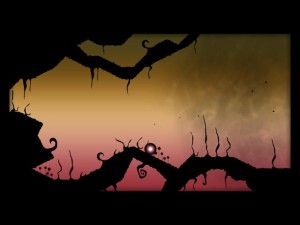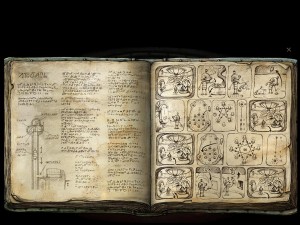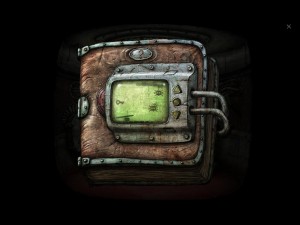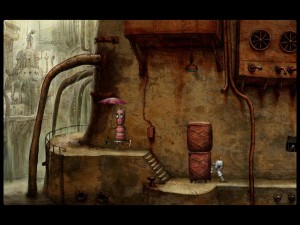Defense Grid: The Awakening
So, I bought a couple new Steam indie bundles recently. (They’re calling them “bundles” now. They used to call them “packs”. I’m guessing there’s a perfectly humble reason for this change in terminology.) And one of them contained Defense Grid, another of Steam’s perennial discount items that I’ve somehow managed to avoid purchasing until now. I’d been curious about it, however, because it seemed to be the first tower defense game with A-list production values — by which, admittedly, I mainly just mean 3D models and voice acting. But that’s a somewhat less rare combination today than three years ago when it was released. Having played it most of the way through now, I have to say that it’s pretty by-the-book, its basic gameplay not much different from Desktop Tower Defense and its myriad online imitators. Things come along a path, you place towers to kill them, and in the process you earn money that you use to build more towers or upgrade existing ones. But it does do a few interesting things that I think are worth pointing out.
For starters, there’s the control scheme. You have a cursor in the center of the screen. Move your mouse and the cursor stays put while the rest of the world moves. This is, of course, basically how first-person shooters work, but you’re not rotating in place here, you’re moving in a plane just like the cursor would if it were moving. And anyway, the fact that this game is so mechanically similar to so many Flash-based games on the web, which generally don’t lock the cursor in place (because that would be really annoying on a web page), means that I’m aware, as I play, of the inversion from how these things usually work. That’s why I describe the mark in the center as a “cursor” rather than as a “reticle”. And the fact that you click on things to open up sub-menus (generally either “choose a type of tower to build here” or “upgrade/sell”) makes it seem even more cursor-like.
The 3D modeling isn’t just window dressing. The curving paths that the invading aliens come in on can cross over and under themselves, like in Zuma, with the result that you’re not just concerned with level geometry, but level topology as well. 2D games are relatively easy to think about, because we’re good at associating information with locations, thinking “This area is secure” or “If the enemy reaches that point it’s time to take desperate measures”. Paths that go underneath the main playfield confound this sort of thinking. Sometimes the paths form a confusing tangle that you need to simplify by blocking most of the pathways off. And that becomes an optimization puzzle: 1And probably an NP-complete one at that. which pathways do you block off to give the advancing enemies the longest route to your base, the most exposure to your guns?
Probably the most interesting thing is the matter of what happens when an alien survives the gauntlet you’ve set up and reaches your base. The normal thing for a tower defense is to do is for the monster to knock off a fixed number of hit points or civilians (sometimes a higher number for tougher monsters), and then either be absorbed (as in Immortal Defense) or teleport back to the entrance for another run-through (as in Gemcraft). In Defense Grid, your hit points manifest as “power cores” that the aliens are trying to steal. This means that the aliens aren’t just trying to reach your base. They have to actually carry the things offscreen. Sometimes the exit is in the same place as the entrance, so that they have to pass by all the same towers twice. Sometimes it’s at the end of a completely different path. Sometimes the level topology is mutable enough that you get to decide how much they have to backtrack. From the way I’ve just described it, you might think that making them double back most of the way is optimal, but that’s not the case. When you kill an alien before it makes it out, any cores it carried drop on the ground and start inching their way back to the base. While they’re on the way home, any other alien with carrying capacity to spare can pick them up. So a core dropped on the path in is just going to shorten some alien’s path. Furthermore, this means that the genre-typical swarms of individually weak creatures are among the game’s most fearsome adversaries toward the end of a level, because they make the panicked last-ditch attempt to rescue your last core futile. As long as even just one member of the swarm survives, it can pick up the core from where it falls and keep carrying it away.
| ↑1 | And probably an NP-complete one at that. |
|---|
 Comments(2)
Comments(2)


